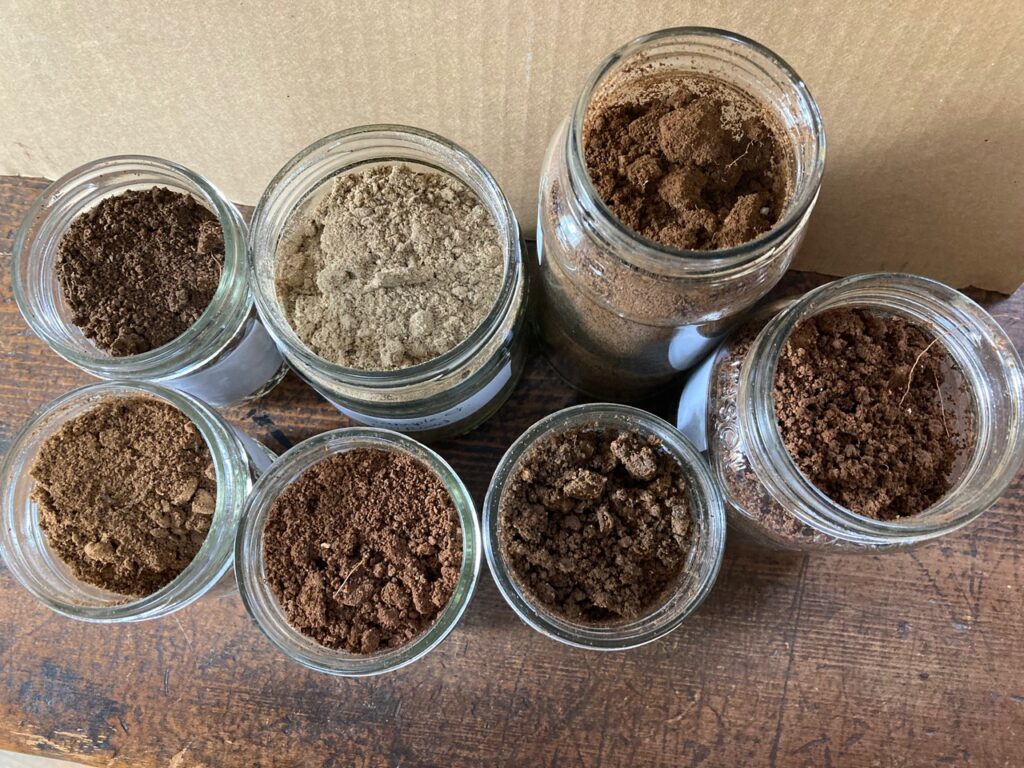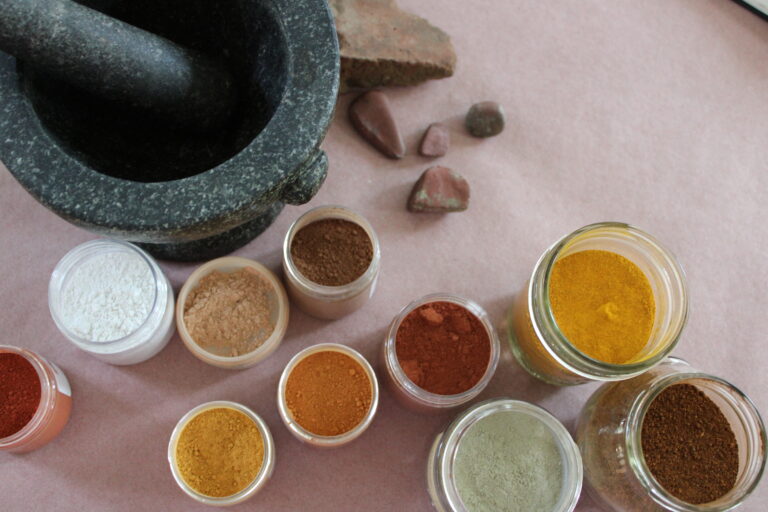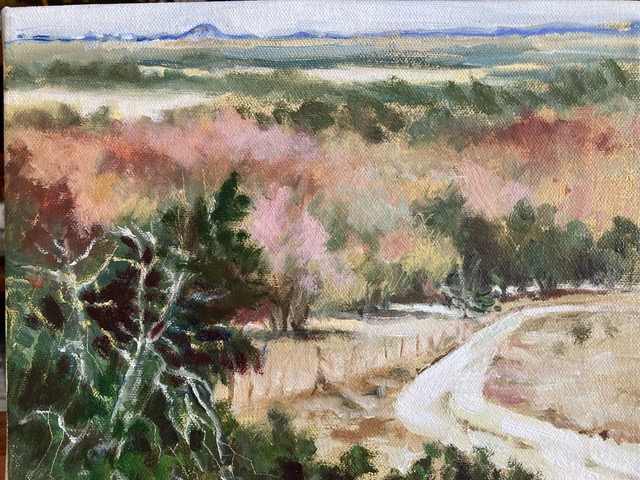Tree Trunks Aren’t Always Brown
Tree trunks aren’t always brown, nor are the bodies of water necessarily blue. This is one of the first hurdles that painting students, whatever their age, must get over as they begin to paint landscapes. Tree trunks and water both reflect light, as does everything else in our environment.
The same holds true for the ground, which is often referred to as dirt, clay, sand, gravel, and so forth. Many people think of the earth we walk upon as simply that—just dirt. They think it’s brown or black, depending on where you go, but it’s not.
I’m here to tell you that the earth is an amazing mix of elements. The combinations which make up our soils are as complex and diverse as the numbers of stars in a night’s sky. Look down the next time you’re out on a walk, and you’ll see for yourself.
Unique Minerals in the Southwest
This season I happen to be wintering in the Southwest. The Llano Uplift, which is also known as the central mineral region in Texas hill country, is not far from where I live. The central mineral region contains unique minerals and rock formations and is characterized by large granite domes, such as Enchanted Rock near Fredericksburg.
The landscape is rolling and hilly. Soils are predominantly coarse-textured sands, but there are also pockets of clay-like crumbly earth that have been weathered from the granite over thousands of years. It is possible to see layers of unique striations along the roadsides that appear after the roads were carved through the underlying bedrock.
My driveway, which rises 1,900 feet above sea level, is one such place that has fascinated me since we’ve moved here. I am fortunate to take daily walks up and down the road, so I’ve had a chance to get a close-up look at the ground on either side. The samples that are pictured here come from collections of soil that I have gathered during these walks.

Ochres in Landscapes
Painters throughout millennia have used ochres (iron oxides), and it is often the case that paintings from other ages have predominately used ochres in their compositions. The next time you visit a museum, try finding a landscape painting from the 1840’s that doesn’t reflect these ochres. Julian Onderdonk, famous for his Bluebonnet paintings in the early 20th century in Texas, is one such artist who made use of the earth taken from the countryside he painted.
Present-day artists and builders continue to follow suit today, applying durable, pervasive ochres and earth pigments as central agents for both function and color in paints, pastels, textiles, inks, cosmetics, and so on.
“According to archaeologists the use of ochres appears to align with the emergence of symbolic thinking and a segue to durable, written language. Today modern humans exist in an ancient lineage of ochre pigment gathering, processing and use—without which we likely would not behave or think or most importantly, imagine or create as we currently do.”
—Heidi Gustafson, Book of Earth
I am quite taken by soil these days as I traipse through hill and dale in search of more pigments that will eventually be used in my own landscape paintings. This is the winter season, and because most plants have either died or become dormant, it is an excellent time for collecting…dirt!
Rock on!



